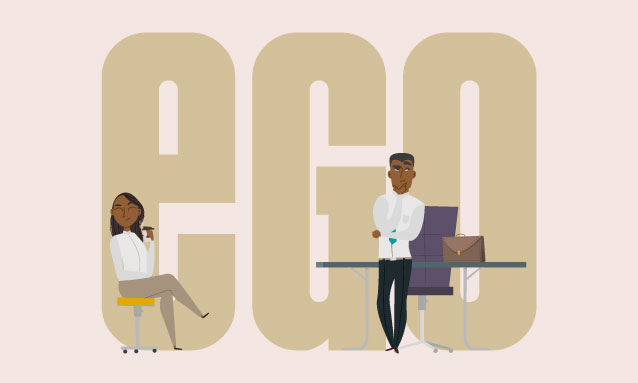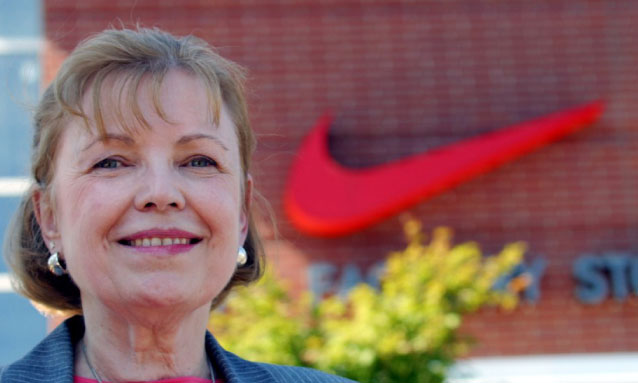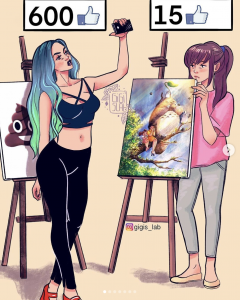
Since leaving the UK and starting my own business as a freelance designer in Botswana, I’ve connected with lot of different people linked to my industry – designers, marketers, communications, etc. Over the years, I’ve observed a bizarre trend in online behaviours by professionals that strikes me as rather odd. Instead of promoting their businesses, their services/products or the work they do, they simply post pictures of themselves.
This type of activity is quite alien to me, as it’s not the behaviour exhibited by professionals I was connected to in the UK. But then again, this region and the UK are two very different worlds. In many ways, social media is a huge part of life here, and it’s a beast that often distorts reality. But for some, it’s as though they can’t exist without generating their own hype. I find this very unusual, especially from those within the creative industry, graphic designers particularly.
If you’re a designer for fame, recognition or simply looking cool, you might as well look for another profession. Designers shouldn’t be driven by ego to be recognised for great work. Recognition is only a small part of who a designer is. – Tiffany Eaton – Designer & Writer
I’ve seen designers create design work (e.g. logos) for businesses that are doing fairly well and then embark upon a quest for social fame. Why? You cannot attribute the success of a business solely to its logo. Of course, the logo can be influential and persuasive and can make products appealing, but the logo is simply the tip of the iceberg. I get it, we’re all human and success feels good. That feeling is addictive, as is the social media attention, but for some, their egos inflate prematurely.
Most creatives are aware of the story behind the origins of Nike’s swoosh logo, however, I’m pretty sure most of them don’t know the designer’s name or what she looks like.
For the record, the Nike swoosh was designed in 1971 by Carolyn Davidson, who at the time was a graphic design student at Portland State University. It was at the university she met Phil Knight, then-assistant professor, who would go on to found Blue Ribbon Sports, and, in turn, Nike.
Knight came up with the idea to create his own brand of athletic shoes, he asked Davidson to design a stripe (industry term for a shoe logo) that “had something to do with movement”. Davidson came up with the swoosh and charged Knight for 17.5 hours of work, totalling $35.
In 1983, due to the success of the Swoosh, she was given a generous amount of stock in the company (estimated to be worth upwards of $1,000,000), as well as a diamond and gold ring featuring the Swoosh design. Davidson went on to be known as “The Logo Lady”.
Source: Creative Market & Wikipedia
This story is heartwarming and rare. Sadly, many uninformed designers try to use this story as the basis to justify their extortionate rates. But the point is, Carolyn designed one of the most famous icons in history. She had every right to shout it from the rooftops and yet very few (who know this story) know her name. She is recognised for her design, but she didn’t seek the limelight or try to capitalise on the social fame and she actually seems like a down to earth lady. Yes, she’s not a millennial and being in her late 70s, she probably doesn’t have a Facebook account, but I think you understand what I’m saying.

Another important point is the fact she didn’t receive any recognition until 12 years later, when her work was proven to be an immense success. The recognition was initiated by the company as a token of appreciation. These days designers here would be blowing their own trumpets within 12 minutes of submitting the logo to the client! The reality is, Nike could have easily gone bust within a couple of years. Carolyn (like any other great designer) played her part by designing a simple and recognisable brand mark for their products, but the logo is not solely responsible for Nike’s colossal success. I’m pretty sure Carolyn would agree with that.
As a designer, your work speaks for itself, if your work can’t sell you then how is your face going to be more persuasive? It’s as though young designers are in a rush to be famous, desperate to be seen as experts in this field. Maybe I’ve become jaded, but when I see designers, marketers and so on posting self-gratifying material, I immediately lose interest. For the most part, it’s the type of material we see from the 70s and 80s used today in funny memes. Those dated modelling poses – fist under chin, sat in front of a Mac, perched on a desk or staring out into the abyss.
Moderation is key, a healthy ego is essential for any designer, but don’t take it too far and become arrogant. Humility goes a long way. It’s easy to get caught up in the moment when your work is being noticed and appreciated, but enjoy the moment and move on. Designers should never be praise-dependent. If a client pays you, then he/she has shown appreciation for your work. Your goal should be to earn a living. A great graphic designer is hardworking, professional, modest and an active one doesn’t have the time for photoshoots.

In the design world, you’re only as good as your last project and being blinded by past triumphs can damage their careers as they progress. Some may turn down opportunities, waiting for something bigger to knock on their door. Some start to believe they are too big for small clients. Success means you made the client very happy and made money off the back of that success, but your next project could go unnoticed.
Rejection is another reason why great designers stay grounded. This industry is competitive and rejection is inevitable. There will be a period of time where you could possibly trade on the back of fabricated stardom, but it won’t last. You may submit a quote or bid for a certain project and it gets rejected. Rejection hurts, but it hurts more when it dents an ego.
In the early years of a designer’s career, the focus should be on learning and gaining experience. For businesses, the focus should be on sales and building the brand. Why should people care who owns whatever business? Think about it, there are massive, successful brands out there and yet we don’t know the faces behind the majority of them. Out of the brands we do know the faces of, we knew their brand first.
Success shouldn’t inflate egos to a point where it becomes a barrier. Success means you gain more experience, should that success turn into recognition and praise, then embrace it, but be humble. Don’t become an irritant, by being respectful and modest you become a better person and a better designer.
Source: Blue Zebra Creative




100% on point!